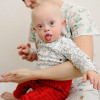
 IJCP Editorial Team
IJCP Editorial Team
Health Ministry Working on 'One Nation, One Organ Allocation' Policy
According to official sources, the Union
Health Ministry is developing a "One Country, One Organ Allocation"
strategy in collaboration with the states to create standardised rules for
registration, allocation, and other components of the procedure. The sources
stated that a uniform policy will give a higher degree of flexibility to
patients who are opting for organ transplants from deceased donors at any
hospital in the country.
As per the data released by governmental
sources, the overall number of liver transplants from alive donors increased
from 658 in 2013 to 2,957 in 2022 and from 240 to 761 in 2022 from deceased
donors, respectively.
The health ministry has already advised
states to abolish the domicile requirement for registering people who want
organs from deceased donors for transplant procedures as part of its efforts to
strengthen the policy. Also, it has eliminated the 65-year-old age restriction
for people registering to receive organs from deceased donors.
Meanwhile, the National Organ & Tissue
Transplant Organization (NOTTO) has made the required adjustments to the
regulations, enabling patients 65 years of age and older to register for organ
transplants from deceased donors.
In
addition, the Union Health Ministry has asked states not to charge fees for
registering such patients after observing that some were doing so in violation
of the Transplantation of Human Organs and Tissues Rules, 2014. According to
official sources, the fees ranged from Rs 5,000 to Rs 10,000.

IJCP Editorial Team
Comprising seasoned professionals and experts from the medical field, the IJCP editorial team is dedicated to delivering timely and accurate content and thriving to provide attention-grabbing information for the readers. What sets them apart are their diverse expertise, spanning academia, research, and clinical practice, and their dedication to upholding the highest standards of quality and integrity. With a wealth of experience and a commitment to excellence, the IJCP editorial team strives to provide valuable perspectives, the latest trends, and in-depth analyses across various medical domains, all in a way that keeps you interested and engaged.














Please login to comment on this article